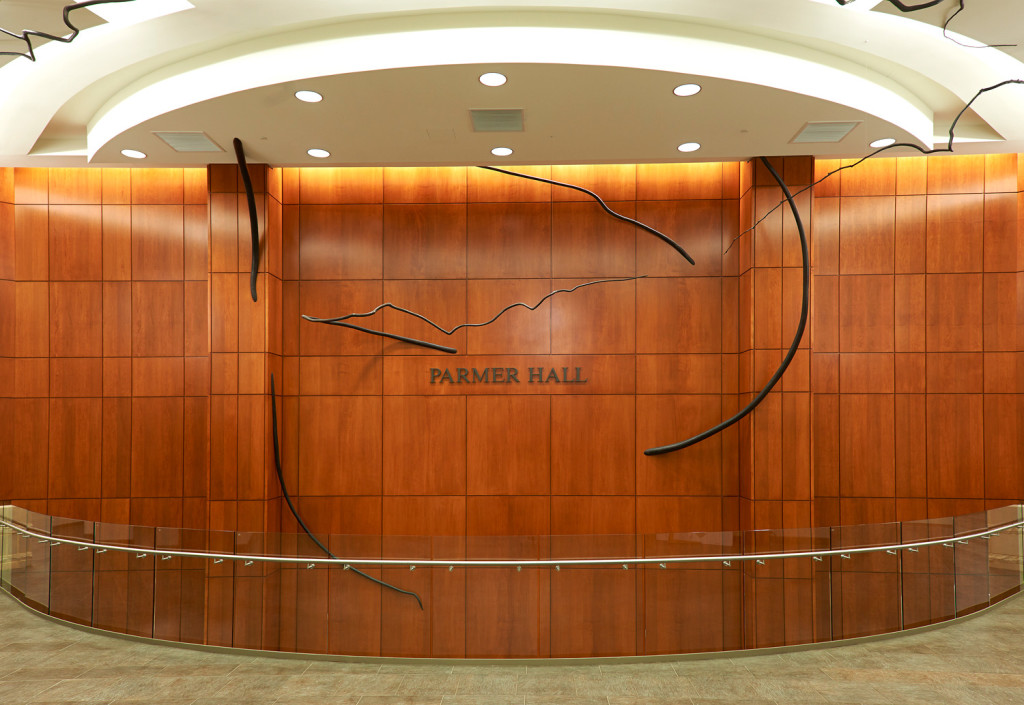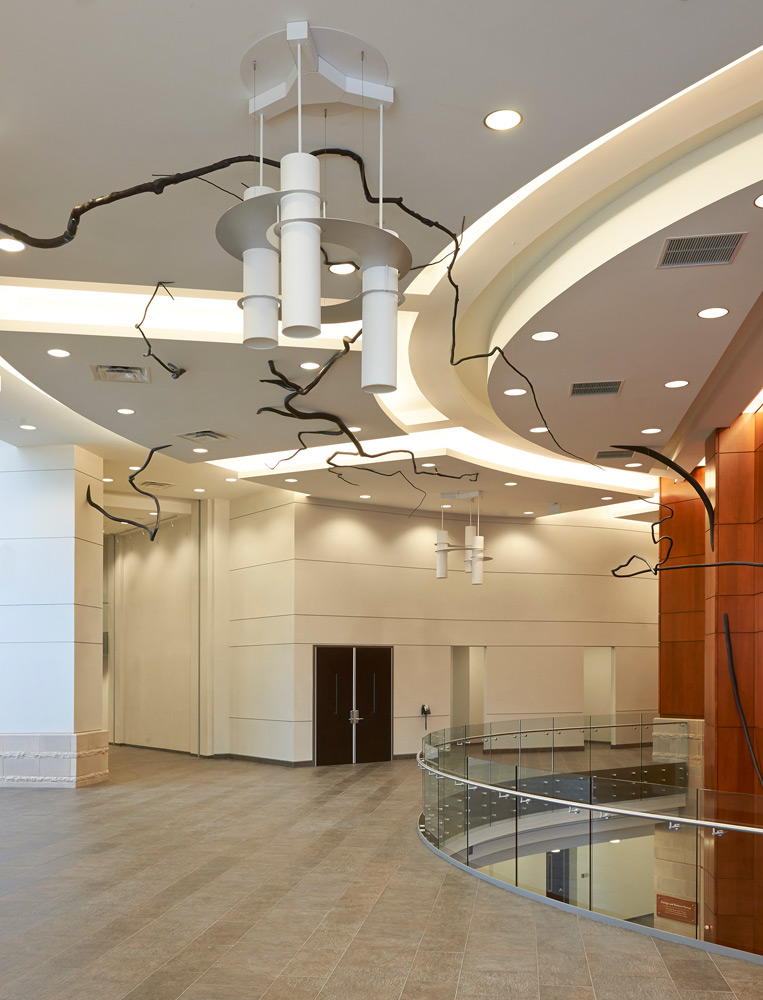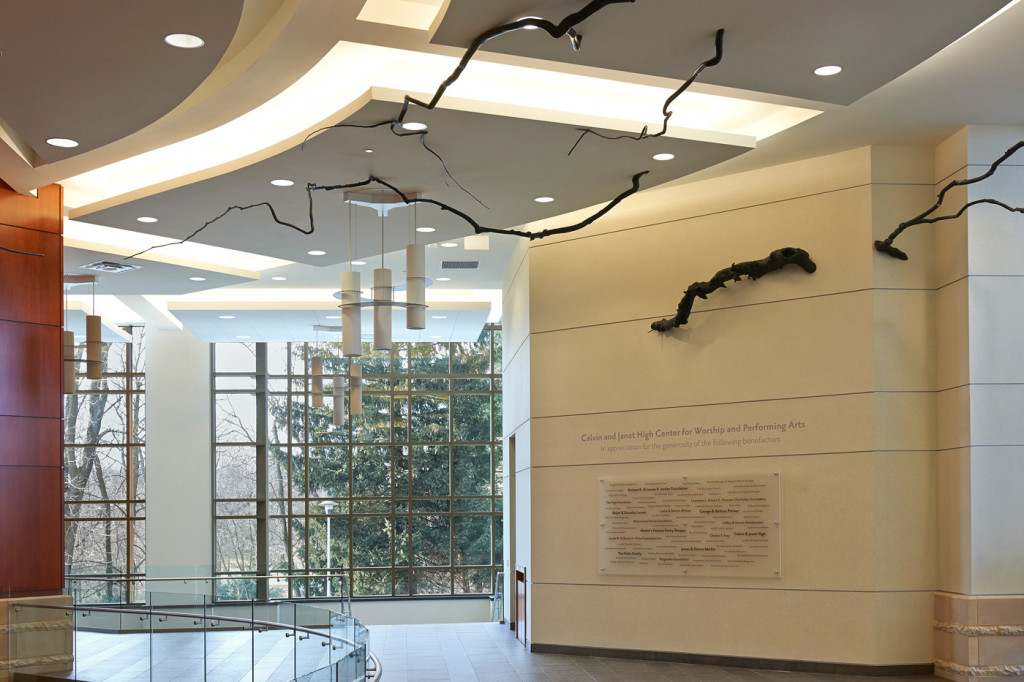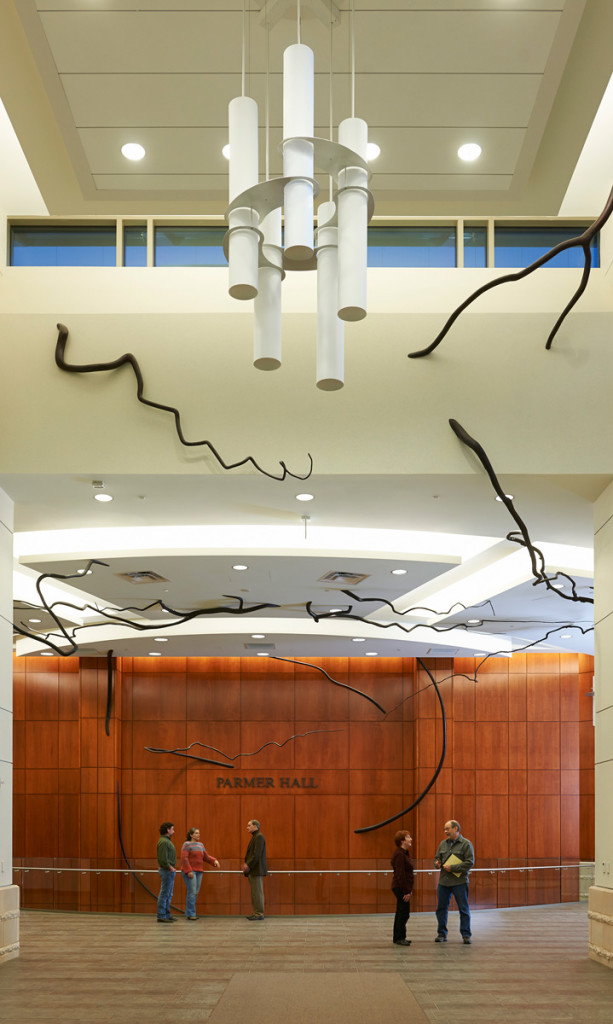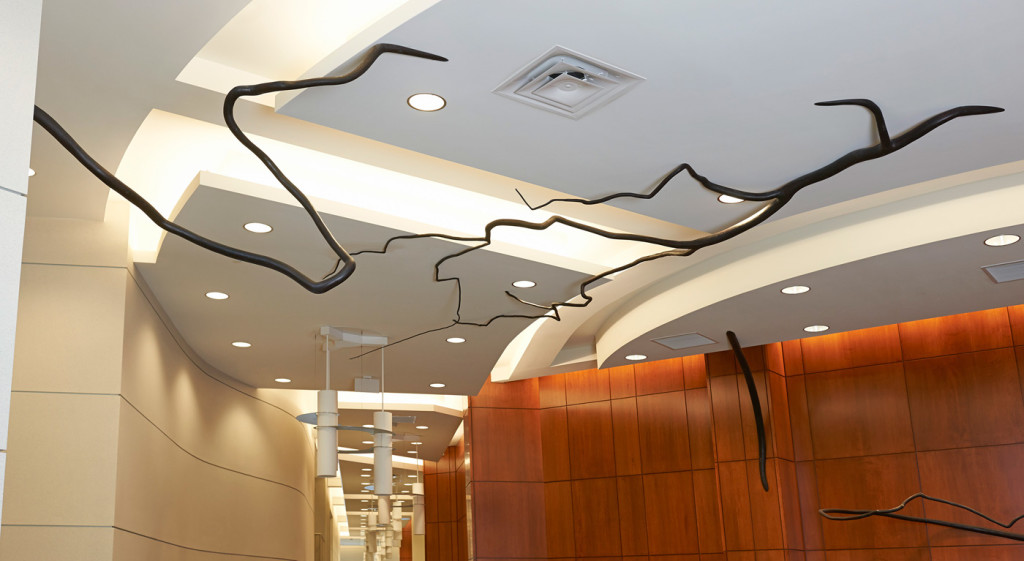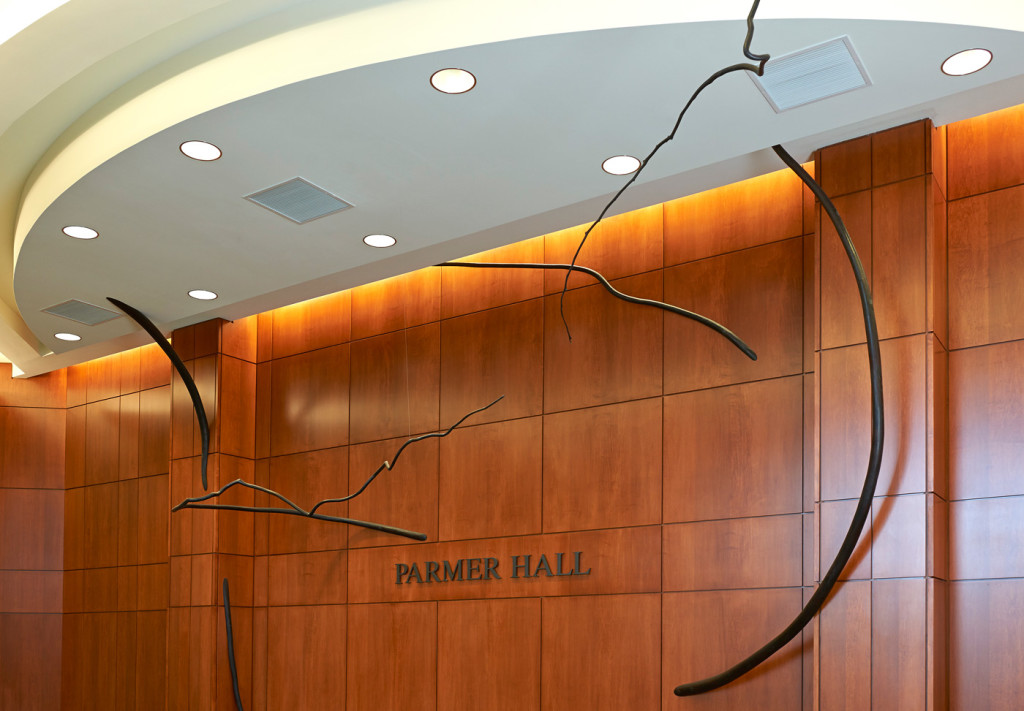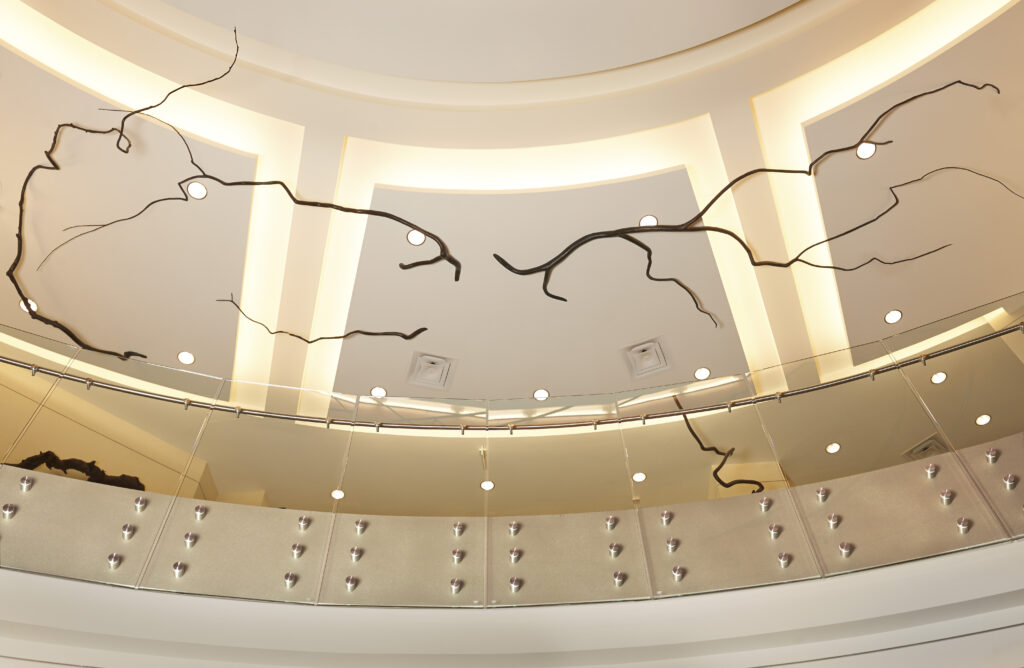Psalm
The sculptural installation in the entrance to the Calvin and Janet High Center for Worship and the Performing Arts is composed of fourteen linear forms that move throughout the entrance space. Each form was made from multiple pieces of apple wood that are fit together to create dynamic and expressive lines. Over fifteen hundred feet of apple limbs measuring between one and eight feet in length were cut from a local orchard that was being cleared to make way for a housing development. All of the limbs were peeled, and then dried for one to two years. From this inventory roughly two hundred and twenty five feet of various shapes were chosen for use. These pieces were modified by grinding and carving before they were joined together. Finally, each completed form was sanded, stained, and sealed before being installed here.
The composition of the installation was developed in response to the dramatic geometry of the architecture. It provides an organic counterpoint to the crisp, modern character of the building. Together the forms create an image of movement, a visual embodiment of activity within this space. There are many kinds of movement occurring in the building’s spaces; the most obvious is the activity of people, as they move from one area to another. One can also see natural light pass across various surfaces, changing the way the building is experienced.
There are invisible movements too, such as the sounds of the musical compositions that begin in instruments and voices, and flow through these spaces to the hearts and minds of those listening. The ultimate unseen activity here is the movement of God’s Spirit, within and among us. Given both of these invisible movements, I chose to name the installation Psalm. Psalm not only refers to the ancient prayers and poetry of the Bible, but also to modern music. The composition by the great jazz musician John Coltrane, A Love Supreme, ends with a “psalm”. So, Psalm unites references to historic acts of worship with the contemporary arts of performance, and evokes the uses of this building. It is fitting to note that Coltrane described his composition as a “thank you to God”.
Theodore Prescott
January 2013
